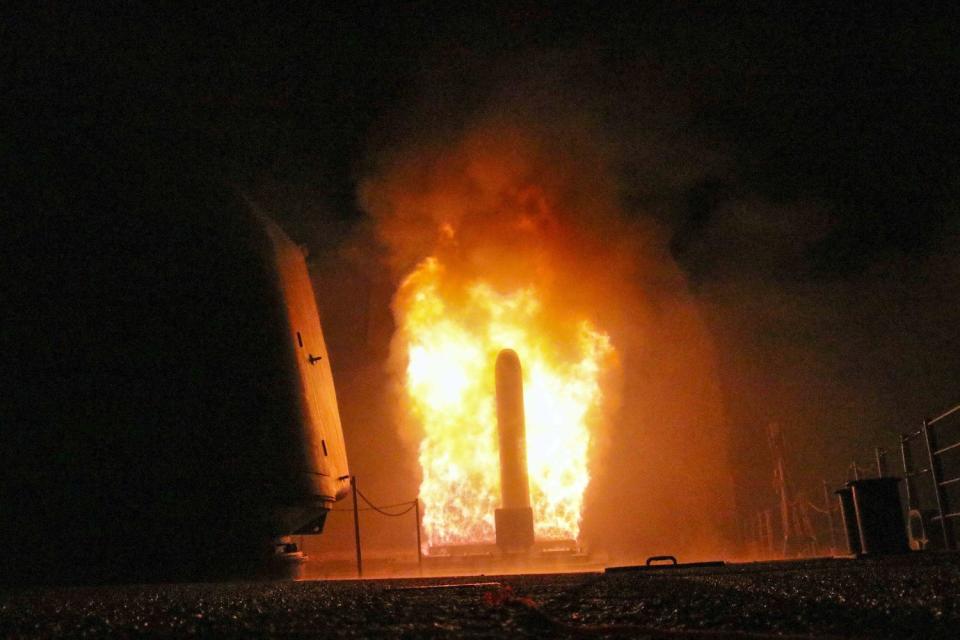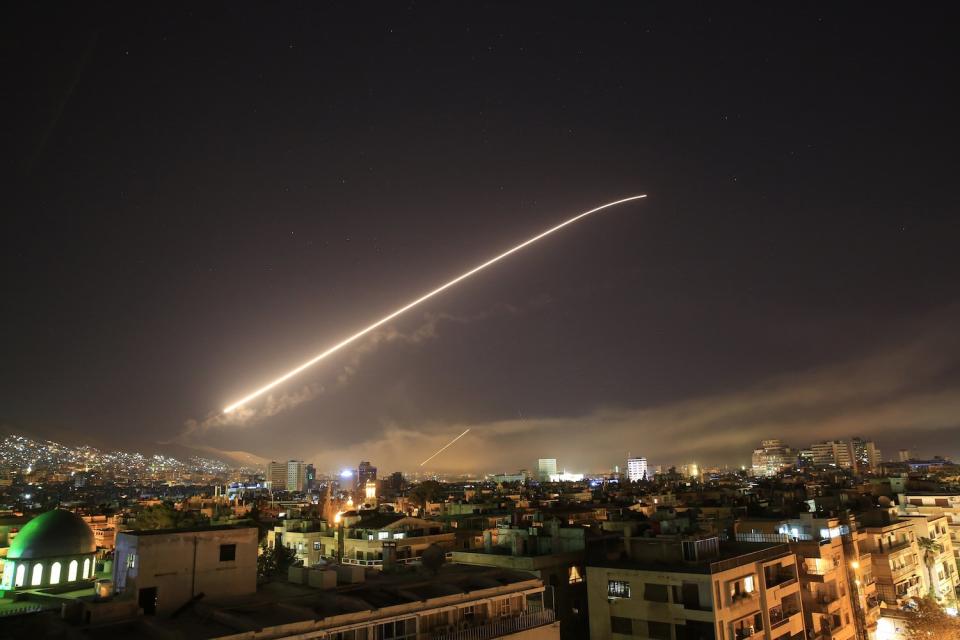The US Navy appears to have fooled Russia and Syria with a warship ruse before the strike

Mass Communication Specialist Seaman Trey Fowler/U.S. Navy via AP
When President Donald Trump threatened to strike Syria, the US Navy had only one destroyer in the region — leading people to assume it would take part.
But when the attack occurred, that ship didn't fire — suggesting it may have been a distraction ploy.
Instead, ships in the Red Sea fired a large portion of the missiles, while Syria and its ally Russia apparently failed to defend against them.
Russian threats to counterattack ultimately did not lead to anything.
When President Donald Trump threatened to send missiles at Syria — despite Russia's promises to counterattack — all eyes turned toward the US Navy's sole destroyer in the region. But that may have been a trick.
Pundits openly scoffed at Trump's announcement early last week of the US's intention to strike, especially considering his criticism of President Barack Obama for similarly telegraphing US military plans, but the actual strike appeared successful.
In April of last year, two US Navy destroyers in the eastern Mediterranean steamed into the region, let off 59 cruise missiles in response to gas attacks by the Syrian government, and left unpunished and unpursued.
But this time, with the US considering its response to another attack against civilians blamed on the Syrian government, Russian officials threatened to shoot down US missiles, and potentially the ships that launched them, if they attacked Syria. A retired Russian admiral spoke candidly about sinking the USS Donald Cook, the only destroyer in the region.
When the strike happened early Saturday morning local time, the Cook didn't fire a shot, and a source told Bloomberg News it was a trick.
Instead, a US submarine, the USS John Warner, fired missiles while submerged in the eastern Mediterranean, presenting a much more difficult target than a destroyer on the surface. Elsewhere, a French frigate let off three missiles.
But the bulk of the firing came from somewhere else entirely: the Red Sea.
Near Egypt, the USS Monterey, a Ticonderoga-class guided-missile cruiser, fired 30 Tomahawk cruise missiles, and the USS Laboon, an Arleigh Burke-class destroyer, shot seven, accounting for about a third of the 105 missiles the US said were fired.
Combined with an air assault from a US B-1B Lancer bomber and UK and French fighter jets, the attack ended up looking considerably different from last year's punitive strike.

AP Photo/Hassan Ammar
Photos from the morning of the attack show Syrian air defenses firing missile interceptors on unguided trajectories, suggesting they did not target or intercept incoming missiles.
"No Syrian weapon had any effect on anything we did," Lt. Gen. Kenneth McKenzie told reporters of the strike on Saturday, calling the strike "precise, overwhelming, and effective."
Syria said it shot down 71 missiles, but no evidence has surfaced to vindicate that claim. The US previously acknowledged that one of the Tomahawks used in last year's attack failed to reach its target because of an error with the missile.
See Also:

 Yahoo Finance
Yahoo Finance 
